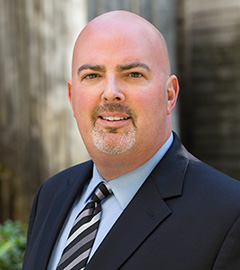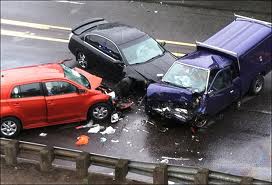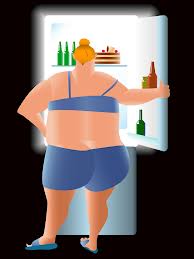Lake Chelan: Lakeshore Trail near Stehekin
Posted Thursday, December 13, 2012 by Chris Thayer


My name is Chris Thayer and I am a personal injury attorney practicing in downtown Seattle. I handle personal injury, medical malpractice and wrongful death claims throughout the greater Seattle area, including Issaquah, Mercer Island and Kirkland.
I am here to help you.
Call for a free consultation (206) 340-2008
Posted Monday, November 19, 2012 by Chris Thayer
If you are in a car accident that involves multiple cars, determining the amount of fault attributable to each driver can be difficult and complicated. Taking photographs of the relative position of the vehicles (if safe to do  so), getting the names and contact information from all witnesses, and making sure the police are called to the scene are all helpful. There can be more than one party at fault for causing a collision.
so), getting the names and contact information from all witnesses, and making sure the police are called to the scene are all helpful. There can be more than one party at fault for causing a collision.
In a rear end collision, the car which fails to come to a stop and strikes the car in front of it is almost always going to be considered at fault for causing the collision. This is known as the Following Car Doctrine. There are exceptions, but they are rare and only arise out of fairly atypical situations.
In what I call “sandwich collisions”, there are three or more cars in a line that get stacked up. Imagine a line of three cars and the last car in line (car 3) strikes the car in front of it (car 2) so hard that strikes the car in front of it (car 1); in most cases the driver of car 3 will be considered at fault – and no fault or liability will be attributed to car 2 – unless it can be shown that 2 was also negligent in some way.

Washington law allows for the fault (i.e. liability) for causing an accident to be attributed to more than one party. This ultimately is a question for the jury to decide if you have to file suit. In Washington, where you have a fault free plaintiff, there is what is known as joint and several liability for the at fault defendants.
Example: You (the plaintiff) are in car 1 and involved in an accident with two other people (defendants) in car 2 and car 3, both defendants are negligent and you are “fault free” but are seriously injured in the accident. In this situation, the jury would ultimately have the duty of apportioning fault for causing the collision between car 2 and car 3. Because of the “joint and several liability” under this situation, even if only 10% of the fault were attributed to car 2 and 90% to car 3 – you would have the right to collect the full judgment from either car 2 or car 3 (but no double recovery allowed).
Insurance companies, when negotiating with unrepresented parties, often try to take advantage of claimants by  claiming that a portion of the fault for a collision was attributable to someone else. Determining liability and fault can be confusing and involves understanding and interpreting Washington case law and statutes. It is important to not let insurance companies take advantage of you by trying to convince you to settle for less than a fair amount.
claiming that a portion of the fault for a collision was attributable to someone else. Determining liability and fault can be confusing and involves understanding and interpreting Washington case law and statutes. It is important to not let insurance companies take advantage of you by trying to convince you to settle for less than a fair amount.
If you find yourself in a situation where the insurance adjuster is trying to argue that you should accept less money than you believe you are entitled to because of an argument that some other party is at fault; you should talk to an experienced personal injury attorney to make sure that your rights are protected and that you are being treated fairly.
Posted Saturday, August 18, 2012 by Chris Thayer
There are entire books written on the concept of subrogation, and I am not going to attempt to cover all aspects or go into extensive detail. I will try to explain at least the basics, as it relates to a typical car accident personal injury claim where your medical expenses are paid for out of your Personal Injury Protection (PIP) coverage.
 The average person has probably never taken a close look and really read all the details of their auto insurance policy. If you did, you would come across a section entitled “subrogation” relating to your PIP insurance. Your PIP insurance (assuming you have not expressly waived this coverage when you purchased your policy) provides that the insurer will pay for all medical expenses that are reasonable, necessary and related (i.e., caused by) the collision - regardless of fault.
The average person has probably never taken a close look and really read all the details of their auto insurance policy. If you did, you would come across a section entitled “subrogation” relating to your PIP insurance. Your PIP insurance (assuming you have not expressly waived this coverage when you purchased your policy) provides that the insurer will pay for all medical expenses that are reasonable, necessary and related (i.e., caused by) the collision - regardless of fault.
If you pursue a claim against the at fault party for personal injuries. A portion of your claim involves the medical expenses for treatment received, which were previously paid by your PIP insurer. To the extent you obtain a recovery from the third party’s insurer, your own insurance company has the right to at least partial reimbursement for the payment of medical expenses. This is subrogation. There are exceptions and there are situations where your PIP insurer is not entitled to be reimbursed for any payments. In Washington, if you have had to hire an attorney to help you with your claim, the insurer is normally required to reduce its subrogation claim to reflect the fact the proportionate share of attorneys’ fees and costs that you have incurred. The theory is that the PIP insurer should not get a “free ride” and get all of its money back, since the only reason they received the payment is because the claimant retained an attorney.
The intricacies and exceptions to subrogation are just too complicated to try to explain here in short form and on this public forum. But, if you want some help getting to sleep tonight, pull out your auto insurance policy and read through it. You will find many interesting clauses - and limitations - that you probably never knew were there, including a subrogation clause.
Posted Saturday, August 4, 2012 by Chris Thayer
 One of the issues that I frequently discuss with my personal injury clients is the role that exercise, and overall fitness, plays in the evaluation of their claim and recovery. The caveat I always give is that “I’m not a doctor, and I don’t even play one on TV” so please consult with your healthcare provider before engaging in any strenous activity - to make sure you are not endangering yourself or risking further injury.
One of the issues that I frequently discuss with my personal injury clients is the role that exercise, and overall fitness, plays in the evaluation of their claim and recovery. The caveat I always give is that “I’m not a doctor, and I don’t even play one on TV” so please consult with your healthcare provider before engaging in any strenous activity - to make sure you are not endangering yourself or risking further injury.
That said, there are at least a couple of reasons why ensuring that you engage in regular exercise may help your personal injury case.
 The reason this comes into consideration is that insurance companies are always looking for somethign else to blame your pain and symptoms on - other than the accident that actually caused your injury! So, if you are seriously injured in a car accident and suffer neck and back injuries, the insurance comapany evaluating your case may look to minimize the value of your claim by blaming some of your symptoms on the fact that you are “deconditioned”. It is true that poor posture and weak abdominal “core” muscle can certainly lead someone to be more susceptible to neck or back pain. However, under WA law, even if you are “deconditioned” at the time of the accident, the responsible party (and insurance company) are still liable for all your injuries and damages caused by the accident - even if they are worse because you were “deconditioned”.
The reason this comes into consideration is that insurance companies are always looking for somethign else to blame your pain and symptoms on - other than the accident that actually caused your injury! So, if you are seriously injured in a car accident and suffer neck and back injuries, the insurance comapany evaluating your case may look to minimize the value of your claim by blaming some of your symptoms on the fact that you are “deconditioned”. It is true that poor posture and weak abdominal “core” muscle can certainly lead someone to be more susceptible to neck or back pain. However, under WA law, even if you are “deconditioned” at the time of the accident, the responsible party (and insurance company) are still liable for all your injuries and damages caused by the accident - even if they are worse because you were “deconditioned”.That said, you have the power to take this argument away from the insurance company. You can focus on getting regular exercise, which will help you feel better - and as a bonus, may help with the evaluation of your claim.
If all you are capable of doing is going on walks, then find ways to walk a little faster or a little further each time. Get a pedometer or use the GPS feature on your smartphone to track your progress. There are a number of free or modestly priced apps out there that will track your course and your pace. As always, mind the advice of your healthcare providers on what is best for you, but as long as you are up for it, I strongly advise all my clients to get out there and start exercising.
Posted Monday, July 23, 2012 by Chris Thayer
I thought I would start adding a few photos now and then, sharing my passion for hiking and backpacking in the Pacific Northwest. Here is a photo of Crystal Lake - up near Mount Rainier on a recent backpacking trip:

As always, if you or a loved one are in the need of advice or representation for personal injuries suffered in a car accident in the greater Seattle area, please feel free to contact me for a free initial consultation.